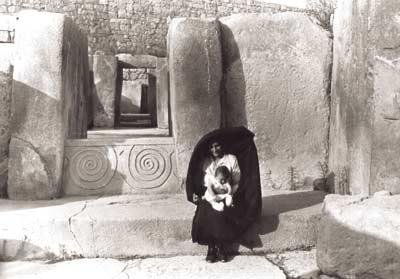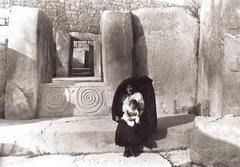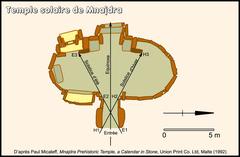
Tarxien Temples Visiting Hours, Tickets, and Guide to Tarxien Historical Sites
Date: 14/06/2025
Introduction to the Tarxien Temples and Their Historical Significance
The Tarxien Temples, situated in the town of Tarxien in southern Malta, are among the Mediterranean’s most important prehistoric archaeological sites. Dating from around 3600 BCE to 2500 BCE, these megalithic structures predate both the Egyptian pyramids and Stonehenge, offering a rare window into early Neolithic civilization and Malta’s rich ancient heritage (Malta Uncovered; thearchaeologist.org). The complex consists of four interconnected temples, renowned for their advanced construction, intricate bas-reliefs, and elaborate ritual spaces that reflect the spiritual and cultural life of Malta’s prehistoric inhabitants.
Discovered in 1913 and extensively excavated under Sir Themistocles Zammit, the site has yielded a wealth of artifacts, including pottery, stone spheres, statues, and symbolic carvings, underscoring its ceremonial and ritual importance (Malta Info Guide; Property Malta). The temples’ apsidal layouts, decorated altars, and artistic motifs—spirals, animals, and geometric patterns—reflect a sophisticated symbolic system focused on fertility, ancestor worship, and cosmology (Megalithic Builders; UM Library PDF).
Today, as a UNESCO World Heritage Site, the Tarxien Temples welcome visitors daily with accessible facilities, guided tours, and educational resources. Modern interpretive technologies—such as virtual tours and augmented reality apps—bring this prehistoric marvel to life, allowing visitors to explore not just the site itself, but also nearby attractions like the Ħal Saflieni Hypogeum and Mnajdra (Heritage Malta; Audiala). This guide provides essential information on visiting hours, ticketing, accessibility, conservation, and travel tips to help you make the most of your visit.
Table of Contents
- Discover the Tarxien Temples: Malta’s Ancient Megalithic Marvels
- Visitor Information: Hours, Tickets, and Accessibility
- Origins and Chronology
- Discovery and Excavation
- Architecture and Artistic Achievement
- Conservation Efforts
- Archaeological Significance
- Excavation Highlights
- Modern Research and Community Engagement
- Nearby Attractions
- Visual and Interactive Media
- Frequently Asked Questions (FAQs)
- Tarxien Temples: A Complete Visitor’s Guide
- Visiting Hours, Tickets, and Practical Guide
- Exploring the Cultural Significance of the Tarxien Temples
Discover the Tarxien Temples: Malta’s Ancient Megalithic Marvels
Visitor Information: Hours, Tickets, and Accessibility
- Opening Hours: Daily, 9:00 AM – 5:00 PM (last admission 4:30 PM).
- Ticket Prices: €10 for adults, €7 for seniors and students, free for children under 12. Tickets can be purchased on-site or online (Heritage Malta Official Site).
- Getting There: Easily accessible by bus from Valletta and major towns; parking available but limited.
- Accessibility: Wheelchair-accessible paths and assistance available upon request.
Origins and Chronology
The Tarxien Temples date from Malta’s Neolithic era (ca. 3600–2500 BCE), with four temples constructed over several centuries. They reflect evolving architectural and ritual sophistication (Malta Uncovered; Audiala).
Discovery and Excavation
Discovered in 1913 and excavated under Sir Themistocles Zammit, the site revealed pottery, stone tools, and spheres thought to aid in transporting massive stones (Malta Info Guide; Malta Uncovered).
Architecture and Artistic Achievement
The temples feature monumental limestone blocks, apsidal layouts, and intricate relief carvings—spirals, animals, and plants—unique to Maltese prehistoric art (Google Arts & Culture). Original decorated slabs are preserved at the National Museum of Archaeology in Valletta; replicas are displayed on-site.
Conservation Efforts
Ongoing conservation includes protective canopies and digital monitoring to safeguard the temples from weathering and visitor impact (Audiala).
Archaeological Significance
As a UNESCO World Heritage Site, the Tarxien Temples showcase the ingenuity of Malta’s prehistoric society—built without metal tools or the wheel (UNESCO; Greek Reporter). The site provides crucial insight into Neolithic ritual, social organization, and artistic expression.
Excavation Highlights
Key finds include pottery, stone spheres, decorated slabs, the iconic “fat lady” statue, and evidence of ritual animal sacrifices (Property Malta; Violeta Matei).
Modern Research and Community Engagement
Technologies such as 3D scanning and non-invasive surveys further research, while educational programs and guided tours foster public engagement (Audiala).
Nearby Attractions
While in Tarxien, visit the Ħal Saflieni Hypogeum and the Mnajdra and Ħaġar Qim temples for a broader understanding of Malta’s prehistoric landscape. Special events and night tours are occasionally offered.
Visual and Interactive Media
Virtual tours, interactive maps, and augmented reality experiences are available through Heritage Malta and the Audiala App.
Frequently Asked Questions (FAQs)
- What are the visiting hours?
9:00 AM – 5:00 PM, last admission 4:30 PM. - Are tickets available online?
Yes, via the Heritage Malta website. - Is the site wheelchair accessible?
Yes, with accessible walkways and assistance available. - Are guided tours offered?
Yes, regularly—bookable in advance. - How do I get there?
By bus from Valletta or nearby towns; limited parking is available.
Tarxien Temples: A Complete Visitor’s Guide
Archaeological Significance
Discovery and Excavation
Excavations led by Sir Temi Zammit in the early 20th century revealed a complex of four interconnected temples built between 3600 and 2500 BCE (thearchaeologist.org). Artifacts include pottery, stone tools, and remarkable carvings.
Chronology and Phasing
Attribution to the Tarxien Phase (c. 2800–2400 BCE) marks a peak in architectural and artistic development (Springer). The complex evolved over time with extensions and modifications.
Ritual and Cultural Context
The temples were a center for rituals, feasting, and possibly sacrificial practices. The “fat lady” figurines and elaborate reliefs suggest fertility and ancestor worship were central themes. UNESCO recognized the site’s importance in 1980.
Artistic and Iconographic Features
The site features detailed reliefs of animals and spiral motifs, including the colossal lower half of a presumed mother goddess statue (blog.onevasco.com).
Architectural Details
- Layout and Structure: Cloverleaf (trefoil) layout, with corridors and apses.
- Construction Techniques: Corbelling and megalithic lintels, likely unroofed (Springer).
- Decorative Elements: Spirals, animal motifs, and pitted stones.
Astronomical Alignments
Some evidence suggests solar alignments, but clearer examples exist at other Maltese sites (Springer).
Visiting the Temples
- Hours: 9:00 AM – 5:00 PM; check the official site for updates.
- Tickets: Discounts for EU residents, students, and seniors. Combined tickets with other sites sometimes available.
- Accessibility: Wheelchair access to main pathways; some areas uneven.
- Guided Tours: Highly recommended and offered regularly.
- Travel Tips: Wear suitable shoes, visit early or late in the day, bring sun protection, and consider visiting nearby Ħal Saflieni Hypogeum and Mnajdra Temples.
Conservation and Preservation
Continuous conservation—including protective shelters and digital monitoring—helps safeguard the site (thearchaeologist.org). Visitors are encouraged to follow site guidelines.
Tarxien Temples Visiting Hours, Tickets, and Practical Guide
Location and Directions
Located in Tarxien, about 4 km from Valletta, the site is accessible by several bus routes and has nearby street parking (often limited).
- Official address:
35, Heritage Malta Head Office (Ex Royal Naval Hospital), Dawret Fra Giovanni Bichi, Il-Kalkara, KKR 1280, Malta - Contact: (+356) 2169 5578 or main office at (+356) 22 954 300 (Heritage Malta Contact)
Hours and Ticketing
- Standard hours: 9:00 AM – 5:00 PM (last admission 4:30 PM); closed on specific holidays or during conservation.
- Admission fees:
- Adults: €6.00
- Seniors/Students/Youth: €4.50
- Children (6–11): €3.00
- Infants (5 and under): Free
- Reduced prices may apply during partial closures (Heritage Malta News).
- Free entry for Heritage Malta Members and Passport Holders (Heritage Malta Store).
Facilities and Services
- Visitor Centre: Ticket sales, maps, informative panels, restrooms, and a gift shop.
- Guided Tours: In English and other languages; book in advance or on-site.
- Interpretive Signage: Multilingual, with tactile models for enhanced accessibility.
- Special Events: Archaeological talks and cultural events occasionally held.
Accessibility
- Walkways: Custom-made to protect ancient surfaces and improve accessibility.
- Wheelchair Access: Most pathways are accessible; some uneven ground remains.
- Visual Accessibility: Tactile models and multilingual signage enhance the experience.
Conservation and Visitor Impact
A major conservation project—funded by European Regional Development Funds—includes archaeological work, environmental monitoring, digital mapping, and protective shelters.
Travel Tips and Nearby Attractions
- Book in advance during peak periods and check for conservation-related closures.
- Wear sturdy shoes and bring sun protection.
- Photography for personal use is allowed (no flash/tripods).
- Explore nearby sites: Ħal Saflieni Hypogeum and Mnajdra Temples.
Exploring the Cultural Significance of the Tarxien Temples
Ritual and Social Functions
The Tarxien Temples exemplify Malta’s megalithic tradition, with elaborate architecture and decoration reflecting fertility cults and ancestor worship (Megalithic Builders). The central temple’s three pairs of apses may symbolize cosmological concepts, reinforced by womb-like interiors and monumental facades (UM Library PDF, p. 8).
Ritual practices included animal sacrifice and offerings, cremation (notably in the South temple during the Bronze Age), and goddess worship, as evidenced by figurines and architectural symbolism (UM Library PDF, p. 9). Ethnographic parallels suggest the temples were designed to evoke mythical and cosmological experiences.
The grandeur of the complex indicates its importance as a cult center and possible pilgrimage destination. Spiral motifs throughout the site symbolize eternity and life cycles.
Comparative Landscape
The Tarxien Temples are part of a ritual landscape including burial sites like Ħal Saflieni, with blurred boundaries between worship and ancestor veneration (Cambridge Archaeological Journal). Decorated stones and animal reliefs embody mythological narratives.
Practical Information for Visitors
- Hours: 9:00 AM – 5:00 PM (last entry 4:30 PM).
- Tickets: €10 general admission, with discounts for EU residents, students, and seniors (Heritage Malta).
- Location: Tarxien, 5 km southeast of Valletta; accessible by bus or taxi.
- Accessibility: Pathways for visitors with mobility challenges; some uneven surfaces.
- Guided Tours: Daily, with special events and educational workshops posted on the Heritage Malta website.
- Nearby Sites: Ħal Saflieni Hypogeum, Ħaġar Qim, and Mnajdra Temples.
- Photography: Allowed without flash; best light is early or late in the day.
- Virtual Resources: Virtual tours and video documentaries are available online.
Summary and Visitor Tips
The Tarxien Temples are a monument to Malta’s prehistoric ingenuity, offering visitors a rich experience of Neolithic architecture, symbolic artistry, and ritual practice (UNESCO; thearchaeologist.org). Conservation measures, accessible facilities, and educational programs ensure the site’s legacy for future generations.
To maximize your visit:
- Check Heritage Malta for updated information.
- Consider joining a guided tour or using the Audiala app for a self-guided experience.
- Respect conservation guidelines and immerse yourself in Malta’s ancient history by exploring nearby sites.
References and Further Reading
- Discover the Tarxien Temples: Malta’s Ancient Megalithic Marvels, 2025, Heritage Malta (Malta Uncovered)
- Tarxien Temples: A Complete Visitor’s Guide to Malta’s Prehistoric Marvels, 2025, The Archaeologist (thearchaeologist.org)
- Tarxien Temples Visiting Hours, Tickets, and Visitor Guide to Malta’s Prehistoric Site, 2025, Heritage Malta (Heritage Malta)
- Visiting the Tarxien Temples: Exploring Malta’s Ancient Megalithic Marvels and Their Cultural Significance, 2025, Megalithic Builders & UM Library (Megalithic Builders)
- UM Library Anthropological Perspective PDF, 1986, University of Malta (UM Library PDF)
- Malta Info Guide, 2025 (Malta Info Guide)
- Property Malta Blog, 2025 (Property Malta)
- UNESCO World Heritage Centre, 2025 (UNESCO)
- Audiala App Official Website, 2025 (Audiala)
- Cambridge Archaeological Journal Article on Prehistoric Malta, 2025 (Cambridge Archaeological Journal)


